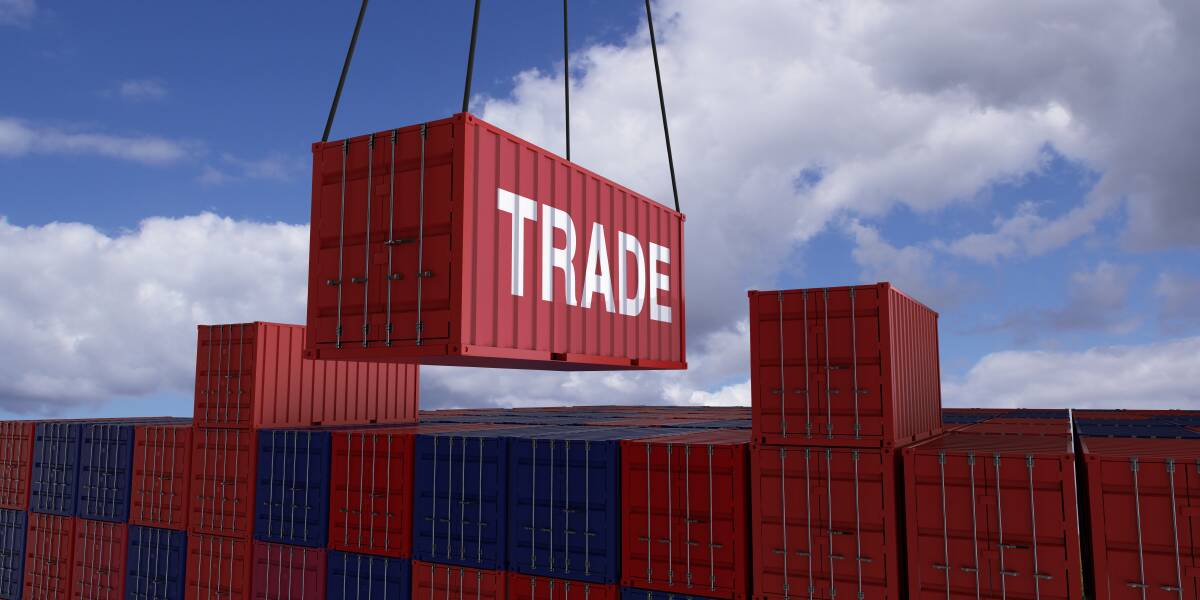Australia's economic relationship with Asia set for growth

This is branded content.
More than 2.2 million Australians are employed in trade-related activities, accounting for more than 40 per cent of Australia's nominal GDP, making it a significant contributor to its economy. Twelve of Australia's top fifteen trading partners are in Asia, accounting for two-thirds of total exports.
A Changing landscape: Australia's evolving economic ties with Asia
Australia's commercial ties with Southeast Asia have been plagued with difficulties in expanding business there. However, many believe this relationship is nearing a turning point as Canberra expands its regional interests and China's connections soften.
TradingView identifies this as one of the key drivers of the Australian Dollar. Former Australian trade minister Andrew Robb is among those urging for greater involvement with Southeast Asia, citing the region's development toward becoming an important player in the global economy.
Despite previous challenges, recent changes - such as corporations seeking alternative manufacturing centres outside of China and the maturing of ASEAN economies - are changing the Australian appetite for investment in the area.
Expanding Australia's investment in ASEAN economies
According to a recent Australian Bureau of Statistics report, Indonesia - the largest ASEAN member state with a significant economy - has not attracted direct investments from Australia between 2018 and 2022. Entrepreneurs describe difficulties in establishing or growing enterprises in Southeast Asia, citing constraints such as finding acceptable local partners and gaining access to trained workers.
Despite these complexities, Australia's direct investments in ASEAN totaled around A$28 billion (US$18.7 billion) last year. In contrast, investments from New Zealand, a country with a much smaller population, totaled A$91 billion, highlighting the region's potential growth prospects.
The low levels of direct Australian investment in ASEAN imply a cautious financial commitment, considering that such ventures are frequently considered riskier and necessitate a long-term outlook. Nonetheless, as corporations look for opportunities outside of traditional "blue-chip" countries, the extensive network of free-trade agreements signed by ASEAN and Australia over the last two decades could serve as a platform for future commerce and collaboration.
Australia and ASEAN have already reached significant milestones in two-way commerce, with a trading volume of A$150 billion in 2021-22, surpassing trade figures between Australia, the European Union, and the United States.
Southeast Asia economic strategy to 2040
A new economic plan to be unveiled later this year may potentially assist Australian businesses in expanding their presence in Southeast Asia. Part of Canberra's efforts to strengthen connections with the area - the "Southeast Asia Economic Strategy to 2040" - aims to map trade and investment opportunities across major Southeast Asian sectors to Australian capabilities.
It will also suggest methods to increase mutual commerce and how Australian businesses can support and contribute to the region's energy transition.
According to Francis Wong, chair of the Australia-ASEAN Business Forum, businesses were eager to capitalise on the strategy's potential commercial benefits but less interested in using it as a political instrument to "win friends" in ASEAN. Australia's new Special Envoy for Southeast Asia, Nicholas Moore, is scheduled to speak with ASEAN heads of missions and corporate executives at the forum.
The plan will assess how developing regional trends may affect or transform Southeast Asian economies over the next two decades, as well as where Australia is best-positioned to capitalise on these new economic possibilities.
It will lay out a strategy for increasing Australia's economic engagement with the region by mapping new trade and investment opportunities in key Southeast Asian sectors and aligning them with Australian skills. The strategy will also include practical proposals for increasing bilateral trade and Australian regional investment.
The plan will recognise that collaboration and ambition are required to meet the issue of climate change and will focus on how Australian firms can support and contribute to the region's energy transition, positioning it for a more successful future.
Australia-China trade dynamics: From raw materials to elaborately transformed manufactures
Since the 1970s, urbanisation, and increased manufacturing and infrastructure spending have driven China's growth. This increased demand for construction materials, power, transportation energy, and manufacturing raw materials. Much of this need could be satisfied by Australia, which provided an excellent opportunity for Chinese exporters to sell their wares.
Currently, Australia's most important commercial partner is China. Australia is China's sixth-largest trade partner, the fifth-largest provider of imports, and the tenth-largest client of exports. Australia buys 25 per cent of its manufactured goods from China, and Australia sends 13 per cent of its thermal coal to China.
Conclusion
China's needs will change from raw commodities to highly processed goods, services, and knowledge as the country enters its next stage of development. While Australia may have a leg up on the competition in this area, the resources industry still has the decisive advantage.
Australia's proximity to China for exporting minerals (of which transport costs are up to 10 per cent of the value) and its massive iron ore reserves (near the sea and easily produced) were unique advantages. However, many advanced nations have the knowledge and technical know-how to satisfy China's latest requirements.


